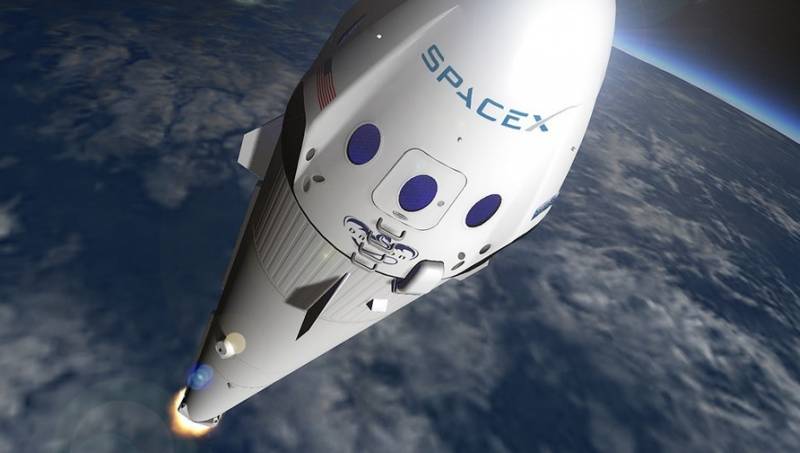Falcon 9 pierced a huge hole in the Earth's ionosphere
SpaceX, launching a Falcon 20 rocket with the Taiwanese Formosat-2017 satellite on board on August 9, 5, made a huge gap in the Earth’s ionosphere. According to ArsTechnica, referring to research data by scientists from Cheng Gong National University published in the publication Space Weather, the hole diameter reached 900 km.
The phenomenon of the appearance of ionospheric holes is not unusual in itself, but it is the size of the resulting hole that strikes.
The rocket took off strictly in an upright position, which led to the formation of huge shock waves, much larger than any similar anomalies that form when launching launch vehicles. In 5 minutes, the Falcon 9 reached a height of more than 300 kilometers, and 13 minutes after the launch of the rocket, a gigantic hole appeared in the ionosphere. The resulting anomaly disrupted the operation of navigation and GPS systems in the western United States, as well as over adjacent territories in the Pacific Ocean. The area of "defeat" amounted to 1,8 million square kilometers. The resulting effect persisted for several hours.
Most often, launch vehicles, reaching heights of 80-100 km, move to an almost horizontal position, and move almost parallel to the surface of the Earth. Falcon, however, overcame 300 km altitude by being in an upright position. This was made possible thanks to the small mass of the satellite that it was carrying (the mass of the Formosat-5 satellite is only 475 kg).
The phenomenon of the appearance of ionospheric holes is not unusual in itself, but it is the size of the resulting hole that strikes.
The rocket took off strictly in an upright position, which led to the formation of huge shock waves, much larger than any similar anomalies that form when launching launch vehicles. In 5 minutes, the Falcon 9 reached a height of more than 300 kilometers, and 13 minutes after the launch of the rocket, a gigantic hole appeared in the ionosphere. The resulting anomaly disrupted the operation of navigation and GPS systems in the western United States, as well as over adjacent territories in the Pacific Ocean. The area of "defeat" amounted to 1,8 million square kilometers. The resulting effect persisted for several hours.
Most often, launch vehicles, reaching heights of 80-100 km, move to an almost horizontal position, and move almost parallel to the surface of the Earth. Falcon, however, overcame 300 km altitude by being in an upright position. This was made possible thanks to the small mass of the satellite that it was carrying (the mass of the Formosat-5 satellite is only 475 kg).

Information